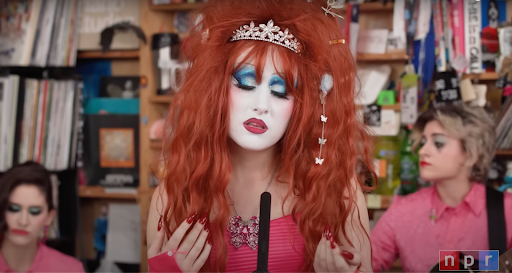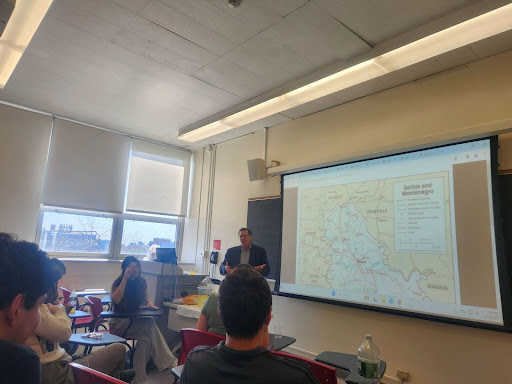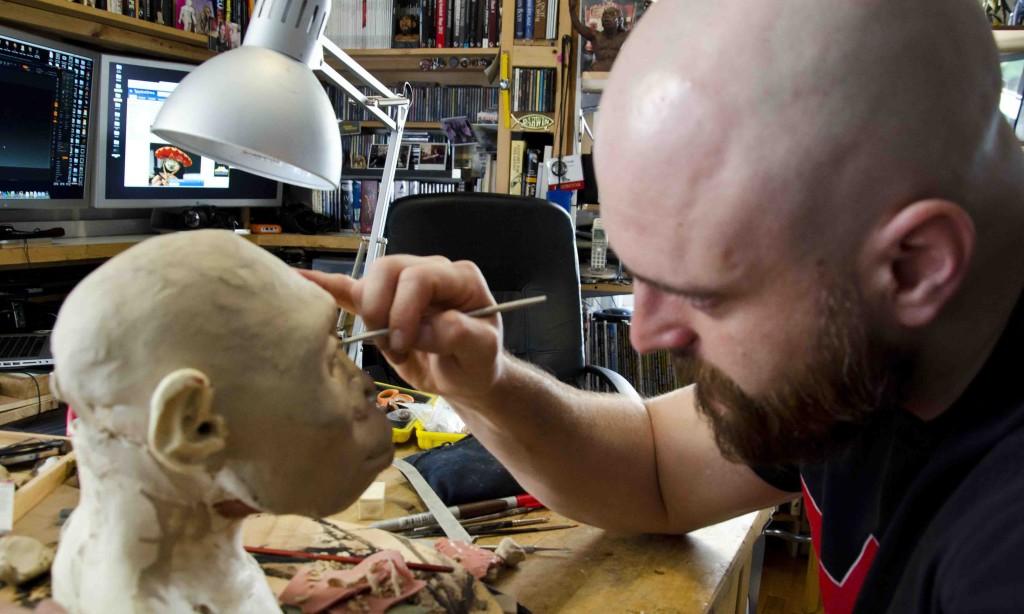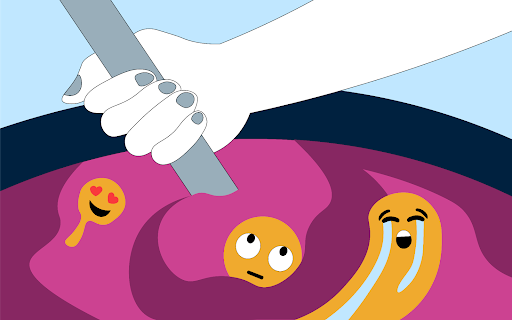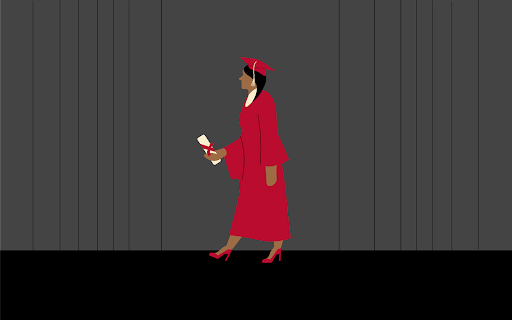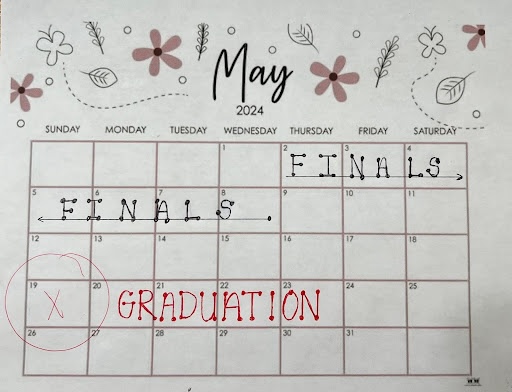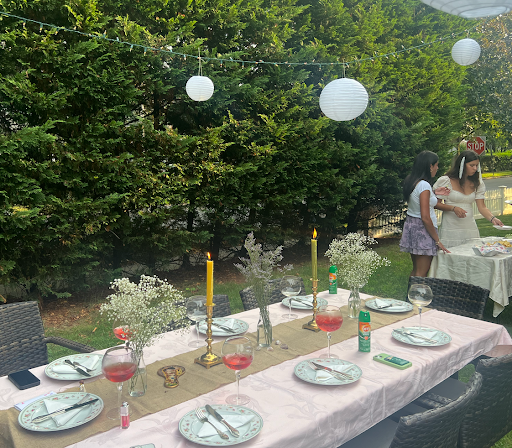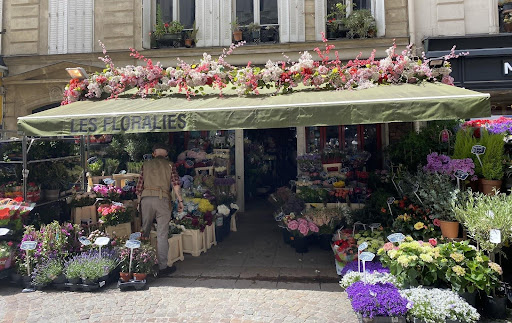Viktor Deak, 36, a world renowned paleoartist known for his elaborate illustrations and life-sized reconstructed heads of distant human ancestors currently has his artwork featured in “Anatomical Origins”, a solo exhibition at the Dr. M. T. Geoffrey Yeh Art Gallery on campus. His work has been featured at museums and on the covers of magazines. He is co-creator of the award-winning book “The Last Human” (2007) and has done concept work for the film, “Rise of the Planet of the Apes”. The Hungarian native currently resides in New York City where he continues to create works of art from his home studio.
The Torch: What made you want to be a paleoartist?
Viktor Deak: When I was young, like around 12 or so I just remember two experiences that were really formative to me. One was just getting a set of books from my grandfather and other was seeing this paleoartist do a reconstruction of an Australopithecus Africanus for National Geographic.
T: How long does it take you to reconstruct a model head?
V.D: Forever—I mean honestly, some of these [models] are never ending.
If I am pressed for time—I have pulled off some of these [models] within about a three, four month time frame from skull to finish. But that’s like, you know, 12, 13-hour days. Sometimes sleepless nights because the model making process is very grueling, the casting can be pretty grueling. You don’t always get a good cast the first time out, you might not get a good cast three tries in and you have already eaten 20 hours. So there is that technical end of some things too.
T: What sort of materials do you use to create all of your reconstructed models?
V.D.: I use plasticine; this is oil based clay. I sculpt on top of generally a plastic resin skull and then I use silicone to make a mold and then I also caste in silicone. So, the silicone is like a Hollywood grade material. It looks really fleshy. There are two kinds—there is the kind that is for casting and one for molding so it is much more heavy duty. It’s great stuff and it really captures detail and everything.
T: Your murals are also featured at this exhibition, including the 78 ft mural called “Lucy’s world” which was commissioned by The Houston Museum of Natural History. How long did it take you to do these murals?
V.D.: The first one for Houston was four months. The second mural it had a lot of complications unfortunately to it. That was about 8 months or so.
T: How did you construct such vivid landscapes in your art murals?
V.D.: Some of them are based from just travelling and taking photography. I love taking landscape photography. Some of the other ones—lately I have been working with a program called Vue that I love because I realized that while there is a lot of things I can do with photo manipulation. I don’t always get the exact control with the lightning or with the atmosphere and time that it takes to just alter a photo I figure I can just use a software where I can build an entire terrain or I can control the lightening, the atmosphere, the angle and everything like that. Z-brush and Vue allow me to create both the space and the being. Photoshop allows me to pull it all together.
T: Do you have a favorite piece in the exhibition?
V.D.: I don’t know. I never thought about it—like my favorite, favorite piece? I am particularly fond of the Australopithecus sediba that is the image for the show—on the promo stuff and actually the guy on the back of it. Those two are my favorites. They just feel really real to me, believable and their totally digital. So I really love that and I am excited and proud of the fact that I was able to create that illusion of something real out of just polygons and something not real. I like that kind of magic.
T: What do you want visitors to walk out of this exhibition saying or feeling?
V.D.: I like people to leave feeling like the story doesn’t end with the experience, that when I walk out of that gallery I can take this with me and I can learn more about this. For people to be able to go there have a moment and maybe make a connection.







